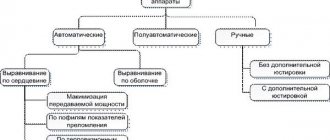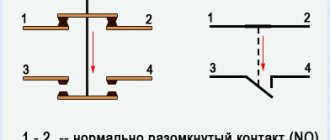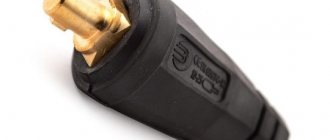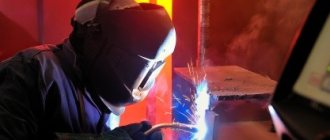Owners of hand-held power tools, both amateurs and professionals, often encounter breakdowns. This is not always the user's fault. There are features due to which this happens regardless of external factors. It depends on the technical perfection of the product, its price and scope of application. A significant portion of malfunctions can be avoided even when using inexpensive power tools if you perform simple modifications, for example, making a soft start.
Disadvantages of power tools and service life
It is well known that not every tool is equipped with such soft start circuits. They mainly come in expensive models from well-known brands Bosch, Hilti, and DeWalt. Moreover, both in the network line and in the battery one.
A power tool without such a device has a bunch of disadvantages:
- armature sparking on the commutator with armature lamellas burning out
- brushes burn out and wear out faster
- rotor and stator windings fail more often
- current surge into the general electrical network
- gears hitting each other and operating faster
- dangerous jerk when starting, tearing the tool out of your hands and increasing the risk of injury
When working with a miter saw with a PP, the blade will not stray from the prepared cutting point. Which is important for non-professional carpenters.
If at your dacha or in your house at the initial stage of construction there is no electricity yet and you use a generator, then sooner or later you will understand that without a soft start unit (soft start unit) with sharp initial currents, the generator will not last long. Therefore, such a thing can save not only the tool, but also emergency power supplies.
You can, of course, independently build a BPP into the inside of the same grinder or trimmer, but not everyone wants to disassemble the equipment and tinker with the insides.
Plus, opening a new case will void the warranty. Therefore, the best use for the KRRQD12A unit is external connection.
Just keep in mind that it is suitable for commutator motors. For asynchronous ones, a frequency generator with different regulation principles is needed.
This box is designed for a current of 12 Amps.
There is also a more powerful 20A model.
What is typical is that they have the same dimensions, but the difference in price is a couple of tens of rubles.
It would seem better to take it, but for a standard 16A socket the first option is more profitable. There will be no desire to connect a more powerful load and thereby burn all the contacts.
DIY craftsmen, of course, assemble similar circuits with their own hands, based on VTA 12-600 or other thyristors, capacitors, a dinistor and a couple of small resistors. You can find many examples of schemes on the Internet.
But for the average user of the instrument, it is much easier to buy all this in a ready-made compact case. You can order a similar block using the link here.
Operating principle
During the start-up of a commutator-type electric motor, a significant short-term increase in current consumption occurs, which causes premature failure of the power tool and requires it to be repaired. Electrical parts wear out (current exceeds 7 times) and mechanical parts (sharp start). To organize a “soft” start, soft start devices (hereinafter referred to as soft starters) should be used. These devices must meet the basic requirements:
- Smooth increase in load.
- Possibility of starting the engine at certain time intervals.
- Providing protection against linear surges of U, phase loss (for a 3-phase electric motor) and various interference of the electrical component.
- Significantly increased service life.
The most widely used are triac soft starters, the operating principle of which is smooth regulation of U by adjusting the opening angle of the triac junction. The triac must be connected directly to the motor windings and this allows you to reduce the starting current from 2 to 5 times (depending on the triac and control circuit). The main disadvantages of triac soft starters are the following:
- Complex schemes.
- Overheating of windings during prolonged startup.
- Problems with starting the engine (leads to significant heating of the stator windings).
The circuits become more complicated when using powerful engines, however, with light loads and idle speed, simple circuits can be used.
Soft starters with regulators without feedback (1 or 3 phases) have become widespread. In models of this type, it becomes possible to pre-set the start time and U value before starting the engine. However, in this case it is impossible to regulate the amount of torque under load. With this model, a special device is used to reduce the starting current, protect against phase loss and imbalance, as well as against overloads. Factory models have a function for monitoring the condition of the electric motor.
The simplest single-phase control circuits are executed on a single triac and are used for instruments with a power of up to 12 kW. There are more complex circuits that allow you to adjust the power parameters of an engine with a power of up to 260 kW. When choosing a factory-made soft starter, it is necessary to take into account the following parameters: power, possible operating modes, equality of permissible currents and the number of starts in a certain period of time.
Soft starters with three wires
By the way, be careful, there are similar devices, but with three wires. For example XS-12/D3.
Or other models that look similar to KRRQD.
But they are assembled on a slightly different principle and need to be installed after the START button, in the instrument itself. Voltage should be applied to them only at the moment the grinder's start button is closed and immediately disappear after it is released.
The connection diagram for them is as follows:
The phase is supplied to contact “A”, zero to “C”. Next, the phase with the output control wire goes to the engine (this is exactly the third wire).
Without a button, such a device will be constantly powered by 220V, which is not acceptable.
There is no such thing in a two-wire unit, since it is connected to an open circuit, and voltage (potential difference) is applied to it only at the moment of starting and operating the tool.
Another point is the so-called electric brake or brake winding on the crosscuts. It may not work with a 3-wire external soft starter, but it will work with a 2-wire model.
How to make a field-effect transistor and more, connect, check
The soft start method based on the use of semiconductors is the most widely used in practice. The following can be used as semiconductor devices :
- thyristors (pass current in one direction) and triacs (as if two thyristors were assembled together, as a result of which they work in both directions);
- field effect transistors;
- IGBT bipolar transistors.
In grinders, a circuit based on thyristors and triacs . In general, other options are rarely used for making soft starts and only in the case of powerful power tools.
A detailed description of how to make, connect and check a soft start yourself can be found at the link “Do-it-yourself soft start of an angle grinder”.
Manufacturing a soft start socket
The most important requirement for such an outlet is its mobility. Therefore, you will need a carrier.
With its help, you can smoothly launch the tool anywhere - in the garage, at the dacha, during the construction of your house in different areas of the construction site.
The first step is to disassemble the carrier.
The main power wires in it can be either soldered or connected to screw terminals.
Depending on this, your additional outlet will also be connected. This should be an additional socket near the carrying case in order to be able to simultaneously connect the instrument in different modes.
By the way, if you mistakenly turn on an angle grinder or circular saw that has a factory built-in soft start into an outlet that is also equipped with such a soft starter, then surprisingly everything will work. The only thing is that there will be a delay in starting the saw or turning the disk for a couple of seconds, which is not very convenient to use and can be puzzling if you don’t get used to it.
Here are real tests of such a connection, carried out by one master from YouTube BaRmAgLoT777. His comment after such tests on a Dremel type engraver, a Bosch drill, a Makita router, and an Interskol circular saw:
Next, to assemble the socket, take a stranded copper wire with a cross-section of 2.5 mm2 and strip its ends.
Then you need to tin the contact pad on the carrier where this wire will be soldered.
Securely solder the cable cores to these pads.
Carefully lay out the wires and close the extension cord.
Take a square external socket for installation on the outer surface of the walls, and try on a soft starter unit in its housing. Since it has compact rectangular dimensions, it should fit there without any problems.
Mount and secure the socket body on the same platform as the extension cord.
The PP block is connected to the gap of any wire, phase or neutral. Do not confuse it, phase and zero are not supplied to it at the same time, i.e. 220V.
It is installed on one of the wires.
Also for this BPP, there is no difference on which side to make the entrance and on which side to make the exit. The twists are soldered and insulated with heat shrink.
After that, all the insides of the socket are assembled into a housing and all that remains is to close the entire structure with a lid.
At this point, the entire reworking of the carrying case and the manufacture of the socket can be considered complete. It will take you no more than 15 minutes.
Models for angle grinder 600 W
For 600 W angle grinders, starters with contact triacs are used, in which the overload does not exceed 10 A. It is also worth noting that there are many devices with plates. They are distinguished by their security and are not afraid of elevated temperatures. The minimum frequency for 600 W angle grinders is 30 Hz. In this case, the resistance depends on the installed triode. If it is used of the linear type, then the above parameter does not exceed 50 Ohms.
Read also: Setting up a tool outside a CNC machine
If we talk about duplex triodes, then the resistance at high speeds can reach up to 80 Ohms. Very rarely, models have stabilizers that operate from comparators. Most often they are attached directly to the modules. Some modifications are made with wired transistors. Their minimum frequency starts from 5 Hz. They are afraid of overloads, but are able to maintain high speeds at a voltage of 220 V.
Direct launch
In a direct start electrical circuit, the machine is directly connected to the mains supply voltage.
The diagram above shows the inrush current characteristic for direct starting. With this connection, the temperature increase in the windings of the machine is minimal.
The connection is made using a contactor (starter). The circuit uses an overload relay to protect the electric motor. However, this method is applicable when there are no current restrictions.
During the start of the machine, the starting torque is limited in order to smooth out a sharp jerk, as a result of which the mechanical parts of the drive and connected mechanisms may fail.
For this reason, manufacturers of large electric motors prohibit direct starting.
Devices for angle grinders 800 W
800 W grinders work with low frequency starters. Triacs are quite often used at 15 A. If we talk about the circuit of the models, it is worth noting that they use expansion transistors, whose current carrying capacity starts from 45 microns. Capacitors are used with and without filters, and the capacitance of the elements is no more than 3 pF. It is also worth noting that starters differ in sensitivity.
If we consider professional grinders, then modifications of 400 mV are suitable for them. In this case, the current conductivity may be low. There are also devices with variable transistors. They warm up quickly, but are not able to maintain high speeds of the grinder, and their current conductivity is about 4 microns. If we talk about other parameters, the rated voltage starts from 230 V. The minimum frequency for models with wideband triacs is 55 Hz.
Starters for angle grinders 1000 W
Starters for these angle grinders are made using triacs with an overload of 20 A. The standard device circuit includes a triode, a stabilizer plate and three transistors. The rectifier unit is most often installed on a wire base. Capacitors can be used with or without a filter. The minimum frequency of the conventional model is 30 Hz. With a resistance of 40 ohms, starters are capable of supporting large overloads. However, problems may arise at low speeds of the angle grinder.
Assembling a model with VS1 series triacs
You can assemble a soft start for an angle grinder using a VS1 triac with your own hands using several rectifier blocks. The capacitors for the device are suitable for the linear type with a capacity of 40 pF or more. You should start assembling the modification by soldering the resistors. Capacitors are installed in series order between insulators. The rated voltage of a high-quality starter is 200 V.
Next, to make a smooth start for the angle grinder with your own hands, take a prepared triac and solder it at the beginning of the circuit. Its minimum operating frequency should be 30 Hz. In this case, the tester must display a value of 50 ohms. If problems arise with overheating of the capacitors, then you need to use dipole filters.
General information
The stator of an electric motor is an inductance coil; therefore, there are resistances with an active and reactive component.
When electric current flows through radioelements that have resistance with an active component, losses occur due to the conversion of part of the power into thermal energy. For example, a resistor and the stator windings of an electric motor have a resistance with an active component. Calculating active resistance is not difficult, since the phases of the current (I) and voltage (U) coincide. Using Ohm's law for a section of a circuit, you can calculate the active resistance: R = U/I. It depends on the material, cross-sectional area, length and its temperature.
If the current passes through a reactive type of element (with capacitive and inductive characteristics), then, in this case, a reactive R appears. An inductor that has practically no active resistance (the calculations do not take into account the R of its windings). This type of R is created due to the Electromotive Force (EMF) of self-induction, which is directly proportional to the inductance and frequency I passing through its turns: Xl = wL, where w is the angular frequency of the alternating current (w = 2*Pi*f, and f - network current frequency) and L - inductance (L = n * n / Rm, n - number of turns and Rm - magnetic resistance).
When the electric motor is turned on, the starting current is 7 times greater than the rated current (the current consumed during operation of the tool) and the stator windings heat up. If the stator coil is old, then an interturn short circuit may occur, which will lead to failure of the power tool. To do this, you need to use a soft starter for a power tool.
One of the methods for reducing the inrush current (Ip) is to switch windings. To implement it, 2 types of relays (time and load) and the presence of three contactors are required.
Starting an electric motor with windings connected in a star type is possible only with 2 contactors not simultaneously closed. After a certain time interval, which is set by a time relay, one of the contactors is turned off and another one, not previously used, is turned on. Thanks to this alternation of switching on the windings, the inrush current decreases. This method has a significant drawback, since when two contactors are simultaneously closed, a short-circuit current occurs. However, when using this method, the windings continue to heat up.
Another way to reduce the starting current is to control the frequency of starting the electric motor. The principle of this approach is the frequency change of the supply U. The main element of this type of soft starter is a frequency converter, consisting of the following elements:
- Rectifier.
- Intermediate chain.
- Inverter.
- Electronic control circuit.
The rectifier is made of powerful diodes or thyristors , acting as a converter U of the network supply into a direct pulsating current. The intermediate circuit smoothes out the pulsating direct current at the output of the rectifier, which is collected on large capacitors. An inverter is necessary to directly convert the signal at the output of the intermediate circuit into a signal of the amplitude and frequency of the variable component. An electronic control circuit is needed to generate the signals necessary to control the rectifier or inverter.
Start via autotransformer
This method is used by using an autotransformer in the electrical circuit, which is connected in series to the machine. It serves to ensure that startup occurs at a voltage reduced by 50 - 80% of the rated voltage. As a result, the starting current and starting torque will decrease. The time interval for switching from low to full voltage is adjusted.
However, there is a drawback here. During operation, the machine switches to mains voltage, which leads to a sharp jump in current.











